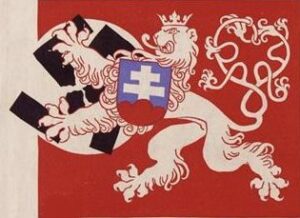The Wannsee Conference: The Infamous Meeting That Shaped the Holocaust
On January 20, 1942, a meeting was held in a villa located in the Berlin suburb of Wannsee. The meeting, known as the Wannsee Conference, was attended by high-ranking officials of Nazi Germany and was led by Reinhard Heydrich, the chief of the Reich Main Security Office. The purpose of the conference was to coordinate the implementation of the „Final Solution,“ a plan to exterminate Jews and other groups deemed undesirable by the Nazi regime.
Background
By 1942, Nazi Germany had already begun its campaign of genocide against Jews and other groups, which included the forced relocation, imprisonment, and murder of millions of people. However, the process of extermination was inefficient and disorganized, and the Nazi leadership recognized the need for a more systematic approach. The Wannsee Conference was called to coordinate the various agencies responsible for the implementation of the „Final Solution.“
Attendees
The conference was attended by 15 high-ranking officials of Nazi Germany, including Adolf Eichmann, the head of the Gestapo’s Jewish Affairs department, and Heinrich Müller, the head of the Gestapo’s secret police. The attendees included representatives from various government agencies, including the Interior Ministry, the Foreign Ministry, and the Justice Ministry. In addition to Heydrich, the meeting was chaired by Wilhelm Stuckart, the State Secretary in the Interior Ministry.
The Conference
The Wannsee Conference lasted for 90 minutes and was held in a businesslike manner. Heydrich opened the meeting by outlining the purpose of the conference, which was to coordinate the various government agencies responsible for implementing the „Final Solution.“ He then went on to describe the various methods that would be used to accomplish this goal, including forced labor, deportation, and extermination.
The attendees discussed the logistics of the deportation process, including the transport of Jews to concentration camps and the allocation of resources necessary for the extermination process. Eichmann presented a detailed plan for the deportation of Jews from Germany and Nazi-occupied territories, which involved the use of trains to transport large numbers of people to concentration camps in the east.
One of the most disturbing aspects of the Wannsee Conference was the way in which the attendees discussed the extermination of Jews in a detached, businesslike manner. They referred to the murder of millions of people as a logistical problem, using terms such as „evacuation“ and „resettlement“ to describe the process.
Aftermath
The Wannsee Conference marked a turning point in the Holocaust, as it formalized the Nazi plan to exterminate Jews and other groups deemed undesirable. The meeting resulted in the deportation and murder of millions of people, and it remains a dark chapter in human history.
In the aftermath of World War II, many of the attendees of the Wannsee Conference were brought to justice for their role in the Holocaust. Heydrich was assassinated by Czech resistance fighters in 1942, but many of the other attendees were tried and convicted of war crimes and crimes against humanity.
Conclusion
The Wannsee Conference was a defining moment in the history of the Holocaust, as it formalized the Nazi plan to exterminate Jews and other groups deemed undesirable. The meeting was characterized by its cold, businesslike approach to genocide, with attendees discussing the murder of millions of people in a detached, logistical manner. The legacy of the Wannsee Conference serves as a stark reminder of the dangers of fascism and the importance of remaining vigilant against the forces of hate and intolerance.
Menu

